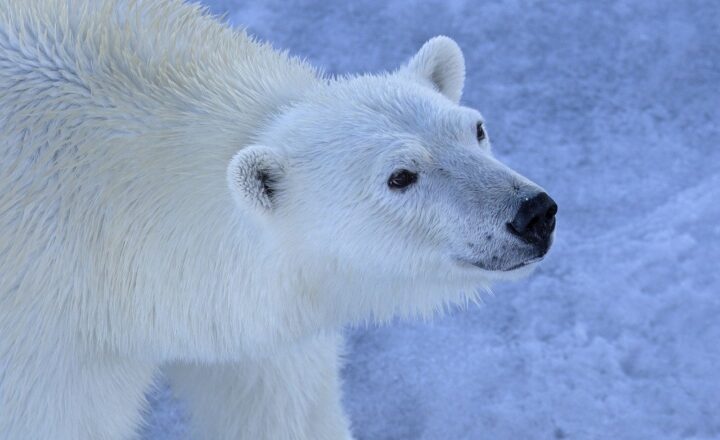How Weather Influences Everything from Ocean Currents to Animal Migrations
November 12, 2024

Weather is more than just a daily forecast; it plays a crucial role in shaping our planet’s ecosystems and influencing various natural processes. From the way ocean currents flow to the migrations of countless species, the weather impacts virtually every aspect of our environment. This article will delve deep into how weather affects ocean currents, animal migrations, and much more, revealing the interconnectedness of these natural phenomena.
1. Understanding the Basics of Weather and Climate
Weather refers to the short-term atmospheric conditions in a specific area, including temperature, humidity, precipitation, cloudiness, visibility, and wind. In contrast, climate is the long-term average of weather patterns over extended periods. Understanding the distinction between the two helps us appreciate how weather events can cause immediate changes in our environment while climate influences the long-term trends.
Weather systems are driven by a variety of factors, including solar radiation, landforms, and the composition of the atmosphere. This intricate dance results in different climatic zones that have distinct characteristics, which play crucial roles in biodiversity, agriculture, and human activities.
2. The Role of Weather in Ocean Currents
Ocean currents are large-scale movements of water driven by several factors, including wind patterns, temperature gradients, and the Earth’s rotation. Weather plays a fundamental role in shaping these currents, particularly through wind patterns.
When the sun heats up the Earth unevenly, it creates differences in air pressure, which results in wind. These winds blow across the ocean surface, dragging water along with them. For example, the trade winds in tropical regions push warm water toward the western Pacific, leading to significant climatic events like El Niño and La Niña, which profoundly impact global weather patterns.
Moreover, variations in temperature and salinity caused by weather events influence vertical mixing in the ocean, affecting nutrient availability for marine life and consequently, the entire marine ecosystem. Cooler temperatures can lead to denser water, encouraging downward movement which brings nutrients from the ocean floor to the surface, fueling phytoplankton growth and supporting larger marine life.
3. Weather and Animal Migration Patterns
Weather has a significant impact on animal migrations, affecting many species worldwide as they search for food, breeding grounds, and suitable habitats. Animals, especially migratory species, are highly attuned to changes in weather patterns, responding to cues such as temperature, daylight hours, and food availability.
For instance, many bird species migrate seasonally to escape colder climates in search of warmer breeding grounds. Changes in weather patterns, such as an early spring, can trigger migrations sooner than usual, leading to mismatched timing with their food sources, which can impact their survival.
Similarly, marine animals like sea turtles rely on environmental cues influenced by weather, such as sea surface temperatures and currents, to navigate during their extensive migrations between nesting and feeding areas. Changes in weather can disrupt these patterns, leading to increased mortality rates.
4. Climate Change: The Long-Term Weather Impact
As climate change continues to alter weather patterns worldwide, its long-term effects on ocean currents and animal migrations are becoming increasingly pronounced. Rising global temperatures are causing melting polar ice caps and altering salinity levels in oceans, affecting current flow and, consequently, global weather systems.
Shifts in weather patterns can impact biodiversity, as species may struggle to adapt to rapid changes in their environments. For instance, animals might face difficulties in finding suitable habitats or food supplies as they migrate. This can lead to reduced populations or even extinction for certain species that cannot adapt quickly enough to the changing climate.
Forecasts predict that some migratory paths will change, possibly leading to increased competition among species for resources in new areas, while some regions may experience an influx of species unaccustomed to the local ecosystem. This flux can have profound consequences for existing biodiversity and the balance of ecosystems.
5. Weather Influence on Agriculture and Human Activity
Weather significantly affects agricultural practices, influencing soil moisture, crop health, and yields. Farmers rely on weather predictions to make critical decisions regarding planting, harvesting, and irrigation.
Extreme weather events, such as droughts and floods, can devastate crops, leading to food shortages and economic instability. Additionally, pests and diseases are often more prevalent during specific weather conditions, posing further risks to agriculture.
Furthermore, understanding weather influences also aids in urban planning and disaster management. As cities grow, effective planning for weather-related challenges becomes paramount, aiding in the reduction of risks associated with flooding, heatwaves, and other severe weather events.
6. The Intricate Connection Between Weather, Ocean Currents, and Biodiversity
The intricate relationship between weather, ocean currents, and biodiversity is undeniable. Weather shapes the physical environment in which various organisms thrive, while ocean currents affect nutrient distribution and temperature regulation in oceans, thereby influencing marine biodiversity.
Inland, weather impacts terrestrial ecosystems, migration patterns, and seasonal behaviors of many species, creating a complex web of interactions. Consequently, understanding these connections can inform conservation efforts and highlight the importance of preserving ecosystems to maintain biodiversity in the face of changing weather patterns.
Preserving natural habitats, promoting sustainable practices, and reducing carbon emissions are vital to mitigate the effects of climate change. This means taking proactive steps to ensure the health of our planet and its diverse ecosystems for future generations.
Conclusion
Weather influences myriad aspects of our planet, from the movement of ocean currents to the delicate patterns of animal migration. The interdependence of these natural phenomena underscores the importance of understanding and monitoring weather patterns, particularly in the context of climate change.
As global weather patterns continue to shift, recognizing the consequences on both ecosystems and human activity is vital. By taking steps to address climate change and promoting awareness about these processes, we can help ensure the survival of numerous species and the health of our planet’s fragile ecosystems.







